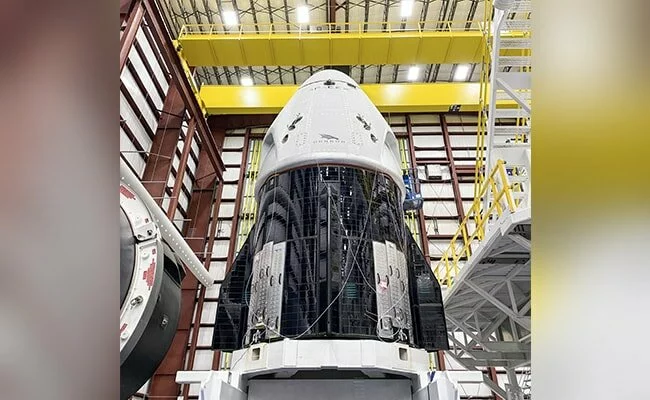A new space age begins on Wednesday with the launch by SpaceX of two NASA astronauts into space, a capacity that for six decades symbolized the power of a handful of states, and of which the United States itself was deprived for nine years.
If the bad weather clears, at 4:33 p.m. (8:33 p.m. GMT), a SpaceX rocket with the new Crew Dragon capsule above it will take off from launch pad 39A at the Kennedy Space Center, the same from which Neil Armstrong and his Apollo crew members set off on their historic journey to the Moon.
Piloted by NASA astronauts Bob Behnken and Doug Hurley, it will head to the International Space Station.
The flight continues despite the stops caused by the coronavirus pandemic. The two men have been in quarantine for two weeks.
Space Exploration Technologies Corp. was founded in 2002 by an entrepreneur obsessed with Mars determined to break the rules of the aerospace industry, Elon Musk.
Gradually, it gained the trust of the largest space agency on the planet.
In 2012, it had become the first private company to dock a cargo capsule at the ISS, having regularly replenished the station since.
Two years later, NASA ordered the next step: to transport its astronauts there, from 2017, by adapting the Dragon capsule.
“SpaceX would not be here without NASA,” said Musk last year after a successful dress rehearsal without humans for the journey to the ISS.
The space agency has paid more than $ 3 billion to SpaceX to design, build, test and operate its reusable capsule for six future space round trips.
Development has experienced delays, explosions and skydiving problems – but even so, SpaceX has beaten the aviation giant Boeing.
NASA is also paying Boeing to build its own capsule, the Starliner, which is still not ready.
NASA’s decision to invest in privately developed spacecraft – a more economical proposition than spending tens of billions of dollars to develop such systems itself, as it had done for decades – has launched under the presidency of George W. Bush for freight, and later under Barack Obama for human theft.
“Some have said it is impossible or unwise to work with the private sector in this way. I disagree,” Obama said in 2010 at the Kennedy Space Center.
At the time, there was immense hostility to Congress and NASA to the start-up’s claims about what it could accomplish.
“Trump will be there”
A decade later, another president, Donald Trump, will attend Wednesday’s launch in Florida.
The Republican is trying to reaffirm American domination of space, militarily but also by having ordered a return to the Moon in 2024.
If NASA could entrust space travel in “low Earth orbit” to the private sector, it would free up dollars for its more distant missions.
“We envision a future where the low Earth orbit is fully commercialized where NASA is a customer among many customers,” said agency administrator Jim Bridenstine.
“If we continue to use American taxpayers’ money … we will never get to the Moon and to Mars.”
It has rained a lot in Florida in recent days, and forecasters in Cape Canaveral estimated Tuesday at 40% the risk of inclement weather on Wednesday.
If necessary, the flight will be postponed to Saturday.
Crew Dragon is a capsule like Apollo, but updated for the 21st century.
Touch screens have replaced switches. The interior is dominated by more subtle white lighting.
It looks completely like the huge space shuttles, huge winged vehicles that transported astronauts into space from American soil from 1981 to 2011.
“We expect smooth driving, but we expect noisy driving,” said Behnken, who, like Hurley, also flew twice in the shuttles.
Unlike the shuttles, one of which – the Challenger – exploded in 1986 after takeoff, Dragon can eject in an emergency if the Falcon 9 rocket has a problem.
Crew Dragon will overtake the station Thursday at an altitude of 400 kilometers and will likely remain moored there until August.
If it fulfills its mission and is certified safe, it will mean that the Americans will no longer depend on the Russians to access space: since 2011, the Russian Soyuz rockets were the only space taxis available.
Launches will again become a regular event in Florida, with four astronauts on board.
A Japanese astronaut is expected to leave for the next trip. NASA would like a Russian cosmonaut to join next.
(With the exception of the title, this story was not edited by GalacticGaming staff and is published from a syndicated feed.)









